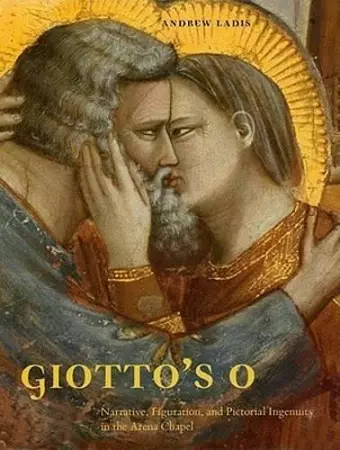Giotto's O
Narrative, Figuration, and Pictorial Ingenuity in the Arena Chapel
Format:Hardback
Publisher:Pennsylvania State University Press
Published:8th Jan '09
Currently unavailable, and unfortunately no date known when it will be back

Andrew Ladis begins his book with Giorgio Vasari’s famous story of Giotto’s O, in which the artist drew a perfect circle freehand, baffled Pope Benedict XI’s foolish messenger, and demonstrated his artistic brilliance to those qualified to understand. The fundamental premise of Ladis’s work is that the Arena Chapel, like Giotto’s mythical O (or tondo), must be understood as a complete, unified whole. He tells us, “the cycle of murals in the Arena Chapel has a depth that underpins the whole, an unpretentious profundity manifested in a formal order, and as in the case of the O, one must have the wherewithal to discern Giotto’s achievement beyond the directness and emotional power of the narrative.” Ladis does not write about the program from the more expected standpoints of patronage or audience, or via extensive analysis of archival source material. Instead, without discounting the former approaches, Ladis considers Giotto’s conception of the Arena Chapel in terms of biblical exegesis, a central geometry, and what he sees as the program’s carefully planned symmetry. He urges the viewer to abandon the temporal narrative and follow “visual cues that encourage readings that transcend narrative time,” and so he moves through a discussion of Giotto’s frescoes, offering new insights about particular passages and continually considering how the meaning of each section resonates with others throughout the chapel.
“Andrew Ladis’s inspired and beautifully wrought meditation on Giotto’s Scrovegni Chapel frescoes, a distillation of over thirty years of study, is a book of rare literary distinction, critical acumen, and scholarly depth—a work that illuminates with stunning insight the spirituality, humanity, and artistic genius of one of the truly great artists in the Western tradition.”
—Paul Barolsky, University of Virginia
“A marvelous work, beautifully written, full of fresh observations about the Arena Chapel.”
— Anne Derbes, Hood College
“This splendid book represents a culmination of Ladis’s long study of late medieval Italian art, particularly the work of Giotto. Completed just before Ladis’s untimely death, it is a sustained analysis of the interrelated subjects, themes, and theological ideas manifested in the Arena Chapel frescoes. Above all, it represents a remarkable act of seeing, complementing Giotto’s own unique vision. This book, with its emphasis on the poetics of form, serves as the perfect complement to Anne Derbes and Mark Sandona’s equally superb The Usurer’s Heart (2008), which provides a more text-based analysis of the chapel, its donors, and its meaning. Both books will be considered crucial reading for years to come about one of the supreme works of European painting.”
—J. I. Miller Choice
“For the reader of these extraordinarily perceptive essays, [Ladis’s] book is a prose poem in ekphrasis. Again and again, he inspires the reader to be a ‘thoughtful viewer-pilgrim’; we pilgrims are fortunate to have such a meticulous and sophisticated guide in Andrew Ladis.”
—Mark Sandona Renaissance Quarterly
ISBN: 9780271034072
Dimensions: 254mm x 191mm x 20mm
Weight: 1021g
224 pages